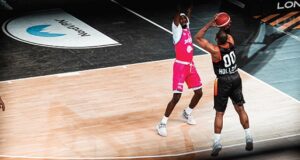Emdad Rahman
As you walk through the entrance and foyer, through the VIP Lounge to the reception, you become aware that football is just one of many sports played and celebrated at this historic Portugese club. Founded on 1st July 1906, Sporting Clube de Portugal (Sporting Lisbon) are part of the “Três Grandes” (The Big Three) national football teams. Sporting was formed by affluent Lisboetas who indulged in “foot-ball” at Belas and hung out together at the Pastelaria Bijou on Avenida da Liberdade. Along with their illustrious rivals Benfica and Porto, Sporting has never been relegated from the top flight since it was established in 1934.
Sporting began life under the venerable and watchful eye of the local landowner – the Viscount of Alvalade. The club initially played football in plain tops, but that all changed by quirk of fate when the players, on tour in Brazil during the 1920s, found themselves having to loan rugby shirts to kit themselves out in.
By the 1930s, the Sportinguistas were at the top of the Portuguese national game. They were spearheaded by the “five violins” – including the prolific Peyroteo, who shares the goalscorers’ record in the Benfica derby with Eusébio. In 1956, Sporting opened their new stadium, named after José Alvalade.
At Academia Sporting in Alcochete, the club has a world class standard training facility. It was used as a base for the Portugese national team during Euro 2004 and for the celebrated youth academy. Sporting has the distinction of boasting global footballers of the calibre of Paulo Futre, Luís Figo, Ricardo Quaresma, Cristiano Ronaldo, Nani, João Moutinho and Simão Sabrosa amongst their resplendent ranks. Among other managerial giants, Luiz Felipe Scolari and José Pekerman have acknowledged the academy as one of the finest in the world.
It was August 2003 when the modern Estádio José Alvalade was unveiled to the world. During a trip to the beautiful capital of Lisbon we decided to experience the magic of Sporting Clube de Portugal as part of a stadium tour.
The stadium, with a capacity of 50,095, opened to the world amid much acclaim, and club captain Pedro Barbosa became the first man to step on to the turf of the newly refurbished and modernised Estádio José Alvalade. England played a part during this historic occasion – Manchester United providing the opposition as referee Silva blew his whistle for the first time at the new arena. That day a jubilant crowd left their new home happy, as Sporting ran out easy 3-1 winners. Luís Filipe beat World Cup winner Fabien Barthez to become noted as the first player to score at the new stadium. João Pinto scored a brace before United struck a late consolation. Ronaldo made his mark and his performance during the game persuaded Sir Alex Ferguson to sign the starlet for Manchester United. The rest is history.
The Estádio José Alvalade is a jewel of a stadium and was newly constructed right next to the old Estádio José Alvalade in time to serve as a playing venue for the Euro 2004 tournament which Portugal gusted. The home of the green-and-whites hosted three first round group matches, a quarter final, and the semi-final between Portugal and the Netherlands. One year later, in 2005, Estádio José Alvalade hosted the UEFA Cup final between CSKA Moscow and Sporting.
Sporting is Portugal’s third most successful club. The Leões (lions) lifted the 1963-64 European Cup Winners’ Cup. On the domestic front, the Verde-e-Brancos has proudly lifted 18 Primeira Liga titles, 15 Portuguese Cups, seven Portuguese Super Cups and four Championship of Portugal titles.
Proudly displayed in the VIP foyer is a plaque from ex-UEFA President Lennart Johansson who visited Lisbon to certify the Estádio José Alvalade as a “Five Star” stadium, accrediting the Club as one with a stadium of excellent condition that is fit to host any European game.
The stadium exterior is decorated with vibrant coloured tiles along with colour coded seating which gives the impression that games at the arena are full to capacity. We went on a formal tour, which was both enjoyable and profound. Visitors can also get to see the two famous (stuffed) lions and the historic Museu Mundo Sporting narrates the story of the clubs success and achievements in numerous sports including basketball. Rita, a Club Press Officer, was our tour guide. Her knowledge and insight was greatly appreciated.
Estádio José Alvalade is located in the north of the city of Lisbon, about seven kilometres from Lisbon’s historic centre and only two kilometres from Lisbon’s other major stadium, Estádio da Luz. The stadium lies next to the E1 motorway. Take exit 5 Campo Grande to get to the stadium. If using public transport, the stadium is best reached by metro. Take the green line from the historic centre and get off at station Campo Grande, which is next to the stadium. The yellow line also stops at Campo Grande, and may be useful from destinations north of the city centre.
Estádio José Alvalade
Rua Professor Fernando da Fonseca, Apartado 4120, 1501-806 Lisboa
Alvalade XXI Guided Tour – Stadium and the World of Sporting
Tel.: 217 516 523 / 217 516 000
email: eventos.visitas@sporting.pt
Open every day, 11.30 onwards.
 East London News A Force for the community…
East London News A Force for the community…




